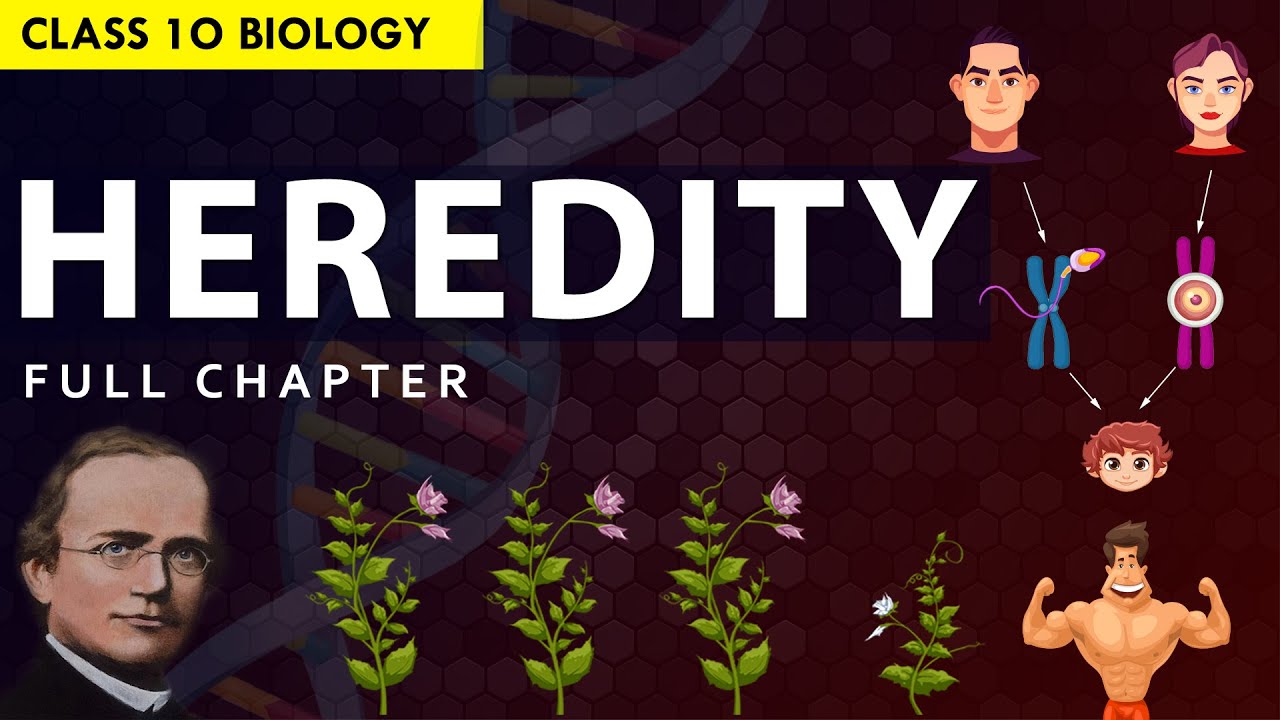Cara Mudah Persilangan Dihibrid (Dua Sifat Beda) - Hukum II Mendel kelas 9
Summary
TLDRThis video script explains the concept of Mendelian inheritance through a dihybrid cross, using pea plants as an example. It illustrates the inheritance of two distinct traits—seed shape and color—by crossing dominant and recessive pea plants. The script outlines the process of setting up parental crosses, calculating possible offspring (F1 and F2 generations), and determining their genotypes and phenotypes. It also explains the phenotypic ratios that emerge from the cross, showing how the traits are inherited and the resulting probabilities, with a final ratio of 9:3:3:1 for the F2 generation.
Takeaways
- 😀 The script begins with a brief introduction to the topic of genetics, specifically Mendelian inheritance, focusing on dihybrid crosses involving two distinct traits in pea plants.
- 😀 The example provided involves pea plants with two phenotypes: round yellow seeds and wrinkled green seeds. These represent two different traits: shape and color.
- 😀 It explains the concept of dominant and recessive traits, where round and yellow seeds are dominant, while wrinkled and green seeds are recessive.
- 😀 The script introduces the concept of 'homozygous' and 'heterozygous' individuals, with the parental generation (P1) consisting of homozygous dominant round yellow seeds crossed with homozygous recessive wrinkled green seeds.
- 😀 The offspring from the initial cross (F1 generation) are all heterozygous with the genotype BbKk, which results in round, yellow seeds because both traits are dominant.
- 😀 The F1 generation is then crossed with itself to produce the F2 generation, resulting in a variety of genotypic combinations for the two traits.
- 😀 A Punnett square is used to map out the possible genotypes and phenotypes of the F2 generation, resulting in 16 possible offspring combinations.
- 😀 The phenotypic ratio of the F2 generation is determined to be 9:3:3:1, which corresponds to 9 round yellow, 3 round green, 3 wrinkled yellow, and 1 wrinkled green.
- 😀 The script uses symbols such as 'B' for the dominant allele for seed shape (round) and 'K' for the dominant allele for seed color (yellow), and discusses the combinations and inheritance patterns.
- 😀 The lesson concludes with an invitation for viewers to ask questions if they need clarification, and the use of background music to make the explanation engaging.
Q & A
What are the two traits discussed in the script related to pea plants?
-The two traits discussed are seed shape (round vs. wrinkled) and seed color (yellow vs. green).
What is the dominant phenotype for the pea plant traits in this example?
-The dominant phenotype for seed shape is round, and for seed color, it is yellow.
What is the difference between dominant and recessive traits as explained in the script?
-Dominant traits are those that mask or cover the expression of recessive traits, while recessive traits are only expressed when two copies of the recessive allele are present.
What are the genotypes of the parental generation (P1) in the script?
-The genotypes of the parental generation are homozygous dominant for round yellow seeds (BB KK) and homozygous recessive for wrinkled green seeds (bb kk).
What is the genotype of the F1 generation?
-The F1 generation has the genotype Bb Kk, where both traits are heterozygous.
What is the result of crossing the F1 generation with itself in the second filial generation (F2)?
-The F2 generation consists of a 16-cell Punnett square, where the offspring have different combinations of the traits, leading to four possible phenotypes: round yellow, round green, wrinkled yellow, and wrinkled green.
How is the Punnett square used in this experiment to predict offspring phenotypes?
-The Punnett square is used to calculate the likelihood of different allele combinations for the offspring. In this case, it's a dihybrid cross, involving both seed shape and color.
What is the phenotypic ratio in the F2 generation?
-The phenotypic ratio in the F2 generation is 9:3:3:1, where 9 offspring show round yellow seeds, 3 show round green seeds, 3 show wrinkled yellow seeds, and 1 shows wrinkled green seeds.
What does the term 'homozygous' mean in the context of genetics?
-Homozygous refers to having two identical alleles for a particular gene, either both dominant (e.g., BB) or both recessive (e.g., bb).
What does the term 'heterozygous' mean in the context of genetics?
-Heterozygous refers to having two different alleles for a particular gene, one dominant and one recessive (e.g., Bb or Kk).
Outlines

This section is available to paid users only. Please upgrade to access this part.
Upgrade NowMindmap

This section is available to paid users only. Please upgrade to access this part.
Upgrade NowKeywords

This section is available to paid users only. Please upgrade to access this part.
Upgrade NowHighlights

This section is available to paid users only. Please upgrade to access this part.
Upgrade NowTranscripts

This section is available to paid users only. Please upgrade to access this part.
Upgrade NowBrowse More Related Video

IPA Kelas 9 : Pewarisan Sifat III (Hukum 2 Mendel : Persilangan Dihibrid)

Dihybrid cross and the Law of Independent Assortment | High school biology | Khan Academy

Monohybrid Cross Explained

BAB 6 PEWARISAN SIFAT DAN BIOTEKNOLOGI Part 1 (IPA Kelas 9 Kurikulum Merdeka)

Worked examples: Punnett squares | Inheritance and variation | Middle school biology | Khan Academy

CLASS 10 HEREDITY & EVOLUTION Full chapter explanation (Animation) | NCERT Class 10 Chapter 8
5.0 / 5 (0 votes)